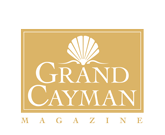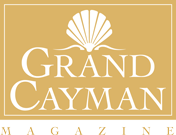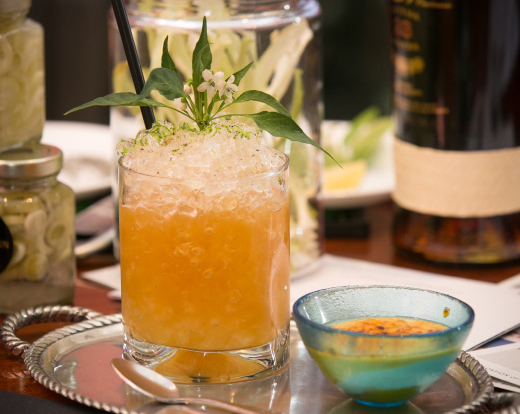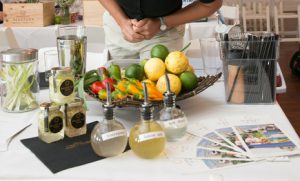It wasn’t all that long ago when the word “cocktail” in the Cayman Islands meant a sugary sweet, fruity, tropical drink, most likely containing rum and garnished with a wedge of pineapple and a colorful little paper umbrella. In a time when piña coladas, yellow birds, daiquiris and ubiquitous rum punch cocktails were most popular, mojitos and margaritas were almost considered cutting edge.
Not anymore.
Today, many of Cayman’s bartenders are serving an imaginative array of complex cocktails, ranging from the classics and modern twists on classics to their own creations using locally sourced ingredients. Restaurants and lounges have developed extensive cocktail menus, and on most you can’t find a piña colada or a frozen cocktail of any kind.
Cocktail happy hours, cocktail dinners and cocktail competitions abound these days, and bartenders are becoming more sophisticated in their techniques.
In the five-year period between 2011 and 2015, several alcoholic beverage categories saw declines in imports into the Cayman Islands and table wines and beers saw modest increases of 13 and 16 percent respectively over that time period. During the same period, unsweetened spirits less than 100 proof saw a phenomenal increase in imports of 66 percent, something that is at least partially the result of Cayman’s blooming cocktail culture.
History
Prior to coming to Grand Cayman in 1996, Agua Restaurant & Lounge co-owner Walter Fajette worked as a bartender in Italy. When he was hired as a bartender in Cayman he tried to transition the cocktail culture from the quick-to-serve, premade mixes that were popular at the time to one where craft cocktails were made with fresh juices and quality ingredients.
“I tried to do that here, but there was no support from employers or the American market – who would never wait five or 10 minutes for a cocktail,” he said, referring to the fact that most restaurants here at the time primarily catered to tourists, the large majority of whom came from the United States.
Fajette said that he replaced the sweet-and-sour mix used in his restaurant’s margaritas with fresh juice and the result wasn’t well-received at that time.
“One America lady told me it was the worst margarita she ever had,” he said with a laugh, adding that she was used to cocktails with sweet-and-sour mix.
For Fajette, one of the key changes in Cayman’s cocktail culture over the last 20 years has occurred because the American market has embraced craft cocktails.
“If something happens in the States, it can happen here,” he said. “But it can’t happen here unless it happens in the States.”
Fajette said that he often traveled to New York, which saw a cocktail renaissance in the early-to-mid 2000s, and noticed the change in the market for quality cocktails occurring.
“You could really see the movement coming up,” he said.
When he and his business partner Cristiano Vincentini opened Agua, they saw the opportunity to serve high-quality, craft cocktails to drive the lounge part of their restaurant. It just so happened that one of Cayman’s best bartenders, Simon Crompton, had exactly the same idea, so Agua hired him.
Crompton had originally come to the island in 2005 to work as a bartender at The Ritz-Carlton, Grand Cayman. When he arrived, he found pretty much the same thing Fajette had found nine years earlier in terms of the cocktail scene.
“When I first arrived, there were a few good bartenders, but most of the ingredients that were being used were premade mixes or just spirit and juices,” he said. “You could get good mojitos, martinis and Old Fashioneds here and there, but they were more one-offs.”
One of the bartenders Crompton credits for starting Cayman’s craft cocktail revolution was Franco Centola at Ristorante Pappagallo. Centola, who spent 20 summers working as a bartender at the famed Belmond Hotel Cipriani in Venice, Italy, came to Cayman in 2008 and immediately started making craft cocktails from the small bar area at Pappagallo.
Crompton’s own evolution into craft cocktails didn’t really begin when he took over the bar at Agua.
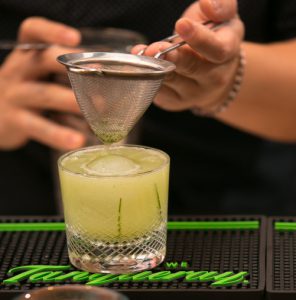 “The owners were hugely supportive in everything I wanted to do,” he said, “and the first thing we did was start using fresh ingredients whenever possible for all our drinks.”
“The owners were hugely supportive in everything I wanted to do,” he said, “and the first thing we did was start using fresh ingredients whenever possible for all our drinks.”
After attending a bartending course in New York in 2012 that focused on cocktail and spirit basics, Crompton came back to Cayman and put the classic cocktails on the Agua menu.
“Once I was happy I knew all the classics inside and out, then I started experimenting with recipes and ingredients,” he said.
Diageo Reserve World Class
With Agua, Ristorante Pappagallo, The Ritz-Carlton, Grand Cayman and a few other establishments leading the way, a cocktail culture slowly began to emerge on Grand Cayman. In January 2013, that culture got a big lift in the form of the Diageo Reserve World Class cocktail competition.
Diageo, the world’s largest producer of spirits, established World Class in 2009 as a way of raising awareness of its premium spirit brands and elevating the craft of bartending through an international competition that includes spirit and brand education during several rounds leading up to the country final.
Despite Grand Cayman’s small population, Diageo brought the competition here through its distributor Jacques Scott Group, allowing Cayman bartenders a chance to compete and advance to the global finals, in which only one bartender from each participating country gets to compete. In 2016, the competition came to Grand Cayman for the third time, after skipping 2015.
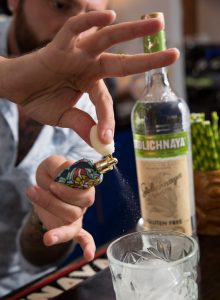 Crompton won the Cayman portion of the 2013 competition and went on to compete in the global finals while on a luxury cruise ship sailing the Mediterranean. The experience vastly improved his bartending skills.
Crompton won the Cayman portion of the 2013 competition and went on to compete in the global finals while on a luxury cruise ship sailing the Mediterranean. The experience vastly improved his bartending skills.
Crompton, who now works for the Jacques Scott Group as a Diageo brand ambassador, thinks World Class has helped raise the bar on bartending and cocktails on the island.
“I think just by looking at the amount of quality bartenders that are now here on island illustrates the benefit World Class has had, and… we are now considered one of the best islands in the Caribbean for cocktails,” said Crompton. “Plus this year alone we have had some of the biggest names in the cocktail world come to Cayman.”
Cocktail events
Coming off the successful launch of the Diageo Reserve World Class competition, Jacques Scott created Cayman Cocktail Week in October 2013 and has presented it every October since. Cocktail Week puts together a variety of events centered around cocktails in some way. Local bars and restaurants are encouraged to create special cocktail menus for the week, or even the whole month of October.
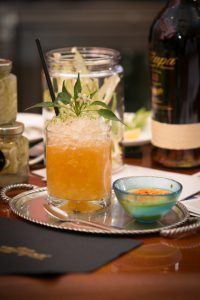 There’s also a cocktail dinner during Cocktail Week. Similar to a wine dinner, these five-course meals feature cocktails with flavors designed to pair with each dish.
There’s also a cocktail dinner during Cocktail Week. Similar to a wine dinner, these five-course meals feature cocktails with flavors designed to pair with each dish.
Buoyed by the success of these dinners, other restaurants have latched onto the idea. Some of them highlight a specific spirit, like the rum and cigar dinners hosted by several restaurants. Others, like those hosted at Agua Restaurant & Lounge and Cracked Conch, feature multiple spirits in craft cocktails.
In 2016, renowned Colombian chef Alejandro Cuellar, who was engaged by Diageo to develop a cocktail and food pairing system for bartenders, partnered with The Ritz-Carlton, Grand Cayman to host a cocktail dinner during the second “wave” of the World Class competition.
Working with Ritz-Carlton Chef-de-Cuisine Thomas Siefried, Cuellar and the other Ritz-Carlton chefs produced high-quality dishes that paired with cocktails made by Crompton and Seven Restaurant bartender Amba Lamb using a different spirit – including Scotch whisky, gin, tequila, bourbon and rum – for every course.
Crompton said the cocktail dinners are a perfect example of how the trend is becoming more mainstream in Cayman, with several being planned for the future.
“In previous years this would never happen, but now with the talent that we have on island, all these guys want to showcase what they can do, and cocktail dinners provide that platform for serving great food and great drinks,” he said.
Unique
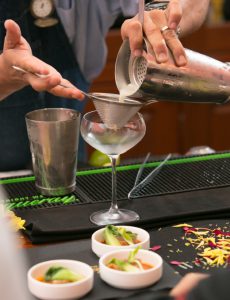 Beyond the special events, however, Grand Cayman has become a place where you can get a well-made craft cocktail at any number of bars, lounges or restaurants.
Beyond the special events, however, Grand Cayman has become a place where you can get a well-made craft cocktail at any number of bars, lounges or restaurants.
“The biggest thing I like about Cayman cocktail culture is that we are totally unique,” said Crompton. “We are a melting pot of cultures here in the Caribbean, so we have a melting pot of ideas when it comes to drinks. You can get great Caribbean drinks that are typical for our region, but are now being made correctly with fresh ingredients. Or you can have a beautiful Italian-style cocktail in the same place, or have a perfectly made Manhattan, or fresh guava margarita, or a soursop and elderflower martini if the fruits are in season.”
The bartender is only limited by his or her own limitations or those by his establishment.
“By not being limited to any specific themes, and by having bartenders from all round the world, we are creating our own unique cocktail culture here in Cayman that for me makes it a really exciting place to be at the moment,” he said.
Crompton acknowledges that some bars and restaurants in Cayman are still using premade mixes because of the cost factor.
“Cost is always a big talking point with drinks,” he said. “Unfortunately it isn’t cheap to make some of the drinks we want to make and you have to charge accordingly, otherwise the bar or restaurant won’t make any money. But there a lot of other drinks that can be made that you don’t need to charge an arm and a leg for. Most good bartenders will know this and their menus will be created with cost in mind… To be honest, compared to cocktail prices around the world at the moment, we aren’t that bad.”
Having begun his career as a bartender, Fajette knows that the employer has to support the bartender in the delivery of craft cocktails and that cost is a factor.
“A lot of this is mathematics; if you’re using very good ingredients, that costs money,” he said, adding that the cocktail then needs to be priced accordingly. However, his customers at Agua are prepared to pay that price.
“A good 90 percent of the people who are into cocktails don’t look at the price,” he said. “If it’s $10 or $12 a cocktail, they know that’s how it is.”
Fajette also knows that in order to offer good craft cocktails, he needs to hire professional bartenders.
“I just don’t hire the first guy who sends me a CV,” he said. “It takes me a month or so to hire a bartender.”
Although he concedes that craft cocktails aren’t for everybody, Fajette said the decision to serve them at Agua has worked out well for the restaurant, which gets a mix of local and visiting patrons. Now that people know they can get a cocktail at Agua, he’s seeing a variety of people ordering them.
“A lot of people are starting [with a cocktail] at the bar and then moving to the table [for their meal],” he said, adding that he’s seeing people exploring and being more adventurous when they’re ordering a cocktail. “It’s not just martinis anymore.”
Because Cayman’s nightlife choices are limited, Fajette thinks the cocktail culture can help fill in some gaps.
“Cayman’s nightlife… only caters to 20- and 30-year-olds,” he said. “I think Cayman nightlife should start catering to 40- and 50-year-olds, too.”
Attracting a variety of age-groups will require some creativity, something Crompton sees happening in the cocktail world. Bartenders are now creating “healthy” cocktails using different juices; serving room-temperature cocktails that are more environmentally friendly because they don’t use ice; and using vessels other than glass to give their cocktails a different look.
“Bartenders are looking to put some fun back into bartending, be it by creating a funny name for the drink, making fun or interesting garnishes as part of the serve, or even bringing blue cocktails back into fashion,” Crompton said. “Keep your eyes peeled for this happening soon on island!”
















